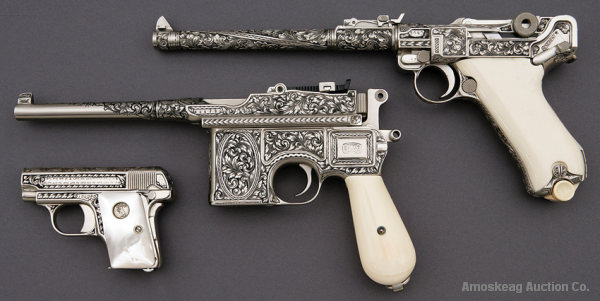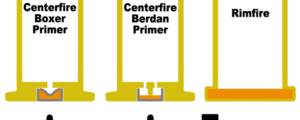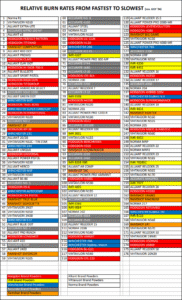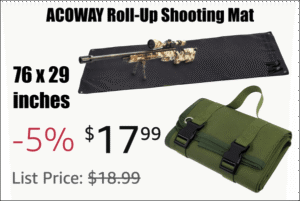October 3rd 2023This Westley Richards & Co. gun was made in 1981 for the nuptials between Lady Diana Spencer and HRH Prince Charles. It is rare, it has a unique ownership history, and it is also intricately decorated. Jim Supica, the Director of the NRA Firearms Museum has written three articles about gun collection. Supica has written three informative articles for anyone who is interested in starting their own firearms collection. The first article discusses the basics of collecting guns, the second article explains the five factors that determine gun values, and finally, the third article explains how to find rare and valuable weapons. We want to highlight five factors, according to Supica, that are most important to gun collectors. These five factors help determine the value and appeal of collectible firearms. Make and ModelMake & model is the starting point when evaluating collectible firearms for most collectors. It will also be a basic requirement for those who have specialized collections. Factors include the quality of the manufacturer’s product, the historical usage and the brand’s aura. Consider the Colt Single Action Army revolvers as an example of this last (and intangible) factor. They were, for many decades, the focus of collectors who were interested in full-size, revolvers dating from the post-Civil War era to the turn of the century. There is no doubt that Colts, at that time, were widely used. In recent years there has been an exciting trend in gun collecting that looks at a wider range of guns other than the traditional blue-chip Colts and Winchesters.
Colt Single Action Army Revolvers are among the most sought-after (and collectible). Condition (and Originality)Obviously, condition plays a major role in the value of a collectible firearm. In this regard, the classic advice for new collectors has always been to wait for guns in excellent condition and pay the premium that they demand. This condition-emphasis appears to have developed during the 1970s and 80s. In the early postwar years of gun collecting, there was more attention to rare variations and historical significance, and fewer people who were concerned about a few percentage points difference in the remaining original finish. I have never understood the appeal of “mint condition” guns. They seem more appropriate for coin or stamp collectors than a field where the historical significance of the artifact is so important. There is a segment of the collectors market that does not care about the condition as long as it is original and not tampered with in an attempt to make the gun more desirable. 3. RarityThe old saying “just because a firearm is rare, doesn’t make it valuable” still holds true in some cases. If only three people are interested in a gun, even if there are only five known examples, the market will be saturated. There does seem to be a greater interest in acquiring rare variations within established collecting areas. There is a resurgence in the collecting philosophy to complete a punch list of models and variations with a particular specialization. This has led to fierce competition for the rarest items. When new research reveals the rarity of a certain variation, it can create a brisk demand for those guns. 4. HistoryGuns with a history of ownership or use in a historical event by a particular individual have always been a source of fascination for collectors, historians and the public. This interest is a universal one and does not seem to be waning. There is a positive trend in the general understanding of what documentation must accompany a historically-attributed firearm to give the credibility necessary to justify a premium.
This Beretta is worth more because it was once owned by Chuck Yeager. Photo NRA museum.5. Art (Decorative Embellishment). Fine engraved guns are more collected for their artistic value rather than their value as firearms. The market for classic engravings by the great engravers from the 19th and 20th Centuries, as well as factory-engraved pieces of more recent years, remains strong. The interest in recent non-factory engraved pieces has diminished, as well as… the trend to add modern engraving to older guns.
Photo courtesy of Amoskeag Auction Company. Photo courtesy Amoskeag Auction Company.Factory-custom engraving should not be confused with mass-produced, factory-made commemorative firearms, which flooded the market in the 1960s and 1970s. The market for commemorative firearms has stagnated for many years, as a few major manufacturers have dominated this niche.
Due to the high prices of original finish guns in good condition, many collectors are unable to afford them. Older factory refinished and period-of-use guns are now more popular than they were a few short years ago. I predict that the availability of high-quality restoration services will also influence collector preferences in future. Top restoration artists are reworking firearms to “as-new” condition with such skill, that even knowledgeable collectors find it difficult to differentiate mint original finish guns and the best restorations. When a restoration is disclosed (as it should be ethically), the price of the gun will be significantly lower than a similar gun in its original finish. It may even be less expensive than the original cost plus the cost to restore the gun. This creates an incentive for a seller to deceive, either through active misrepresentation or passively by simply failing to mention the modification. Similar Posts:Tags Chuck Yeager, Commemorative Engravings, Gun Auctions, Gun Collectings, Historic Firearms, Princess Di, Rarity

















